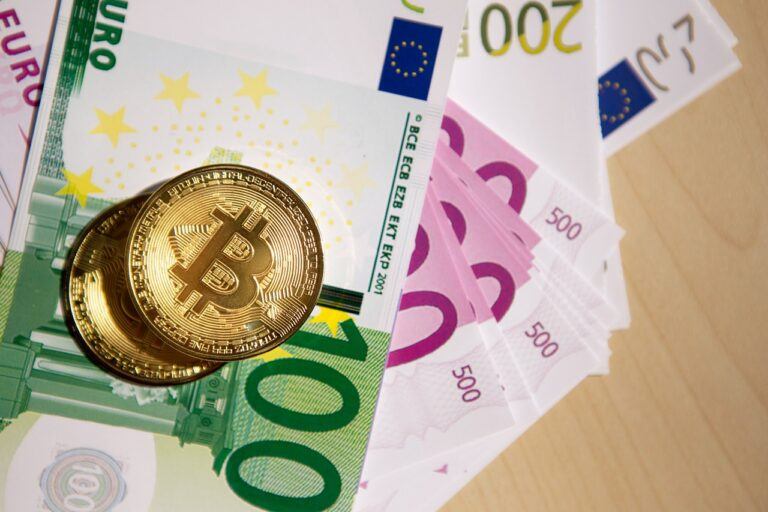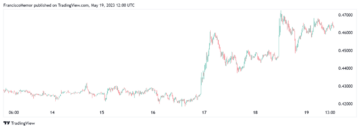
Payal Shah from CME Group highlights the significant role European investors play in the global cryptocurrency landscape. Europe, comprising Central, Northern, and Western regions, now stands as the world’s second-largest crypto economy, trailing only North America.
Payal Shah is a key figure at CME Group where she serves as the Director of Equity and Cryptocurrency Product Development. She is deeply involved in leading the creation of innovative products across various markets, including crypto, equity, and alternative investments.
In a recent opinion piece published in The Wall Stree Journal (WSJ), Shah points out that from July 2022 to June 2023, Europe was responsible for 17.6% of the global cryptocurrency transactions as detailed in Chainalysis’s 2023 Geography of Cryptocurrency Report.
Shah suggests that Europe’s enhanced position in the crypto sphere is primarily due to the stringent regulatory climates in Asia and the ongoing regulatory hurdles in the U.S., which have indirectly favored the European markets. She explains that the eurozone’s relatively lenient regulatory environment makes it a conducive hub for crypto-related activities, noting the euro’s status as the second most traded fiat currency in crypto transactions after the U.S. dollar. According to Shah, the shift of trading volumes from Asia, particularly after stringent bans in places like China, has benefited the European markets.
<!–
–>
Shah emphasizes that for institutional adoption of assets, ample liquidity is essential, and European markets are well-positioned in this regard. She observes that European institutions have broad access to diverse crypto financial instruments such as ETFs, ETNs, and a variety of derivatives, bolstered by strong support from European exchanges that have expanded through substantial funding and global outreach.
Moreover, Shah points out that decentralized finance (DeFi) has become particularly attractive in Europe, where it represents the majority of the cryptocurrency value received. She describes how, in a low to negative interest rate environment, European institutions are increasingly drawn to DeFi platforms as viable alternatives for securing better yields, leveraging the technological advances that DeFi offers.
Finally, Shah comments on the technological proficiency of European financial institutions, which she believes have historically prioritized IT infrastructure more than their U.S. counterparts. This technological edge, Shah notes, has accelerated the adoption of blockchain and crypto technologies within the European financial sector. She adds that numerous European banks and exchanges are actively exploring both centralized and decentralized blockchain applications, anticipating a blend of traditional and digital asset trading in the near future.
In her closing remarks, Shah underscores that as the eurozone’s economy progresses, the importance of tailored risk management tools, such as CME Group’s euro-denominated futures contracts for Bitcoin and Ether, will grow, highlighting these tools’ roles in managing exposure to cryptocurrencies and strengthening Europe’s stance as a dominant force in the global crypto market.
Featured Image via Pixabay
- SEO Powered Content & PR Distribution. Get Amplified Today.
- PlatoData.Network Vertical Generative Ai. Empower Yourself. Access Here.
- PlatoAiStream. Web3 Intelligence. Knowledge Amplified. Access Here.
- PlatoESG. Carbon, CleanTech, Energy, Environment, Solar, Waste Management. Access Here.
- PlatoHealth. Biotech and Clinical Trials Intelligence. Access Here.
- Source: https://www.cryptoglobe.com/latest/2024/05/cme-groups-payal-shah-on-europes-blossoming-admiration-for-crypto/
- :has
- :is
- :not
- :where
- 17
- 2022
- 2023
- a
- accelerated
- access
- According
- across
- actively
- activities
- Adds
- Adoption
- Ads
- advances
- After
- All
- alternative
- alternative investments
- alternatives
- america
- and
- anticipating
- applications
- ARE
- AS
- asia
- asset
- Assets
- At
- attractive
- Banks
- Bans
- become
- believes
- Better
- Bitcoin
- Blend
- blockchain
- blockchain applications
- bolstered
- both
- broad
- by
- central
- centralized
- chainalysis
- China
- closing
- CME
- CME Group
- comments
- comprising
- contracts
- counterparts
- creation
- crypto
- crypto economy
- Crypto Market
- crypto transactions
- cryptocurrencies
- cryptocurrency
- CryptoGlobe
- Currency
- decentralized
- Decentralized Finance
- decentralized finance (DeFi)
- deeply
- DeFi
- defi platforms
- Derivatives
- describes
- detailed
- Development
- digital
- Digital Asset
- Director
- diverse
- Dollar
- dominant
- drawn
- due
- economy
- Edge
- emphasizes
- enhanced
- Environment
- equity
- essential
- ETFs
- Ether
- Europe
- European
- Europes
- Exchanges
- expanded
- Explains
- Exploring
- Exposure
- favored
- Fiat
- Fiat currency
- Figure
- finance
- financial
- Financial institutions
- Financial Instruments
- Financial sector
- For
- Force
- from
- funding
- future
- Futures
- geography
- Global
- Global Crypto
- Group
- Group’s
- Grow
- Have
- her
- highlighting
- highlights
- historically
- How
- HTML
- HTTPS
- Hub
- Hurdles
- image
- importance
- in
- Including
- increasingly
- indirectly
- Infrastructure
- innovative
- insights
- Institutional
- Institutional Adoption
- institutions
- instruments
- interest
- INTEREST RATE
- Investments
- Investors
- involved
- IT
- journal
- jpg
- July
- june
- Key
- landscape
- leading
- leveraging
- like
- Liquidity
- Low
- Majority
- MAKES
- management
- Management Tools
- managing
- Market
- Markets
- more
- most
- Near
- negative
- North
- north america
- Notes
- noting
- now
- numerous
- Observes
- of
- Offers
- on
- ongoing
- only
- Opinion
- out
- outreach
- particularly
- piece
- Places
- Platforms
- plato
- Plato Data Intelligence
- PlatoData
- Play
- points
- position
- primarily
- prioritized
- Product
- product development
- Products
- proficiency
- progresses
- published
- Rate
- received
- recent
- regard
- regions
- regulatory
- relatively
- represents
- responsible
- Rise
- Risk
- risk management
- Role
- roles
- s
- Screen
- screens
- Second
- second-largest
- sector
- securing
- serves
- she
- shift
- significant
- sizes
- sphere
- stance
- stands
- Status
- strengthening
- stringent
- strong
- substantial
- such
- Suggests
- support
- tailored
- technological
- Technologies
- than
- that
- The
- their
- These
- this
- Through
- to
- tools
- traded
- Trading
- trading volumes
- traditional
- Transactions
- u.s.
- u.s. dollar
- use
- value
- variety
- various
- via
- viable
- volumes
- Wall
- was
- Western
- which
- will
- within
- world’s
- WSJ
- yields
- zephyrnet












